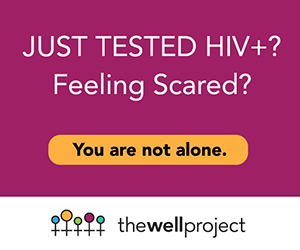Jennifer Johnsen, MD, MPH, Managing Editor
The annual Conference on Retroviruses and Opportunistic Infections (CROI) was held in Seattle, Washington from February 23 through February 26, 2015. CROI provides an opportunity to learn about the latest developments and research questions in the field of HIV, hepatitis C (HCV), and related viruses. Among this year's approximately 4,000 attendees were researchers, clinicians, advocates, and policy makers from across the globe. Highlights of the conference are presented below, by topic:
- HIV Treatment
- HCV Treatment
- HIV Prevention
- HIV & the Immune System
- Hormonal Contraception and HIV
- Tuberculosis (TB)
- Cardiovascular, Bone, and Kidney Health
- Cancers and HIV
- Maternal and Child Health
- Community Perspectives of CROI 2015
- Conclusions
HIV Treatment
Where we stand
According to David Cooper's plenary presentation, 13.6 million people living with HIV (HIV+) globally are receiving HIV drugs, while 28.6 million HIV+ people should be getting them based on the World Health Organization's (WHO) treatment guidelines.
PEPFAR update: flat funding and targeted spending
Although there is a demonstrated need for more people to receive HIV treatment, funding from the US President's Emergency Fund for AIDS Relief (PEPFAR) and the Global Fund is currently flat. That is, funding from these agencies is not projected to increase in proportion to the increasing need for treatment.
Consequently, PEPFAR Ambassador Deborah Birx emphasized an evidence-based shift of resources to where HIV is – a geographically and demographically targeted approach to HIV treatment and prevention efforts. This approach is meant to make the most efficient use of resources to end the epidemic.
Early treatment prevents serious illness and death
The Temprano study looked at starting HIV treatment earlier – for those with CD4 counts above 500 vs. the WHO standard – in a resource-limited area. The study showed a 44 percent reduction in serious illness and death among those who began treatment early. These results support claims that the HIV treatment guidelines should be changed to reflect that HIV treatment should be made available to all people living with HIV.
"Weekend off" treatment encouraging for youth
Among adolescents, for whom treatment adherence is often more challenging than for adults, researchers in Ireland looked at a "week-on, weekend-off" plan. Unlike other treatment interruption trials in which viral rebound was allowed, in this study participants were taking a break from their HIV drugs with the hope that the break would enhance their adherence and viral suppression. The BREATHER study was conducted among 199 young people ages 8 to 24 years in Europe, Argentina, Uganda, Thailand, and the US.
Researchers found that the plan was highly acceptable to young people and appeared safe. Despite being very encouraged, researchers suggested that their results should not yet impact clinical practice, as a two-year follow up of longer-term outcomes is in progress.
TAF: cousin of tenofovir just as effective, with less risk of bone and kidney problems
Tenofovir alafenamide (TAF) is a new 'cousin' to the older and well-known tenofovir disoproxil fumarate (TDF, or Viread). TAF has higher concentrations in cells and lower concentrations in the blood. Therefore, it presumably brings greater amounts of the drug to HIV-infected cells while reducing side effects.
One study showed that a combination of drugs including TAF was just as effective and well-tolerated as the same combination including TDF. The most common side effects were diarrhea, nausea, and headache; these side effects occurred equally in the TAF and TDF groups. Researchers concluded that their results support the single-tablet combination of emtricitabine, elvitegravir, cobicistat, and TAF as a new option for those beginning treatment for HIV.
A similar study compared the effects of TAF to TDF on kidney and bone health. This study found that TAF had less of a negative effect on kidney function and on bone mineral density (a measure of bone strength) than TDF. TAF also appeared to increase blood fats to a lesser degree than TDF. While longer-term effects of TAF-containing regimens are not yet known, these studies suggest that TAF may be safer and better-tolerated that TDF, which is important given the need for long-term treatment in the growing aging HIV population.
Promising new maturation inhibitor (BMS-955176)
Bristol-Myers Squibb showed promising results from an early (phase 2a) trial of an HIV maturation inhibitor, BMS-955176. Maturation inhibitors prevent the virus from maturing within the cell, which means that viral particles that are released have not completed their life cycle and are not infectious. People who have drug-resistant strains of HIV or are treatment-experienced may find drugs like BMS-955176 especially important, since it works in ways that none of the currently approved drugs do.
The drug appears to be both effective at reducing HIV viral load and safe (no deaths, serious adverse events, or discontinuations). It is important to note that none of the 60 study participants were women. Phase 2b trials are planned in the near future.
HCV Treatment
Status update: history to present day
Charles Rice kicked off CROI with a review of hepatitis C (HCV) – from its discovery in 1989, to the many new, highly-effective, and interferon-free treatments available today to cure HCV. The good news is that most of these treatments are also highly effective (approaching 95 percent) in people taking antiretroviral therapy for HIV, and more HCV drugs are in the pipeline. These are likely to be better tolerated and more effective against a broader range of genotypes of HCV. Remaining challenges include diagnosing the estimated 135 million people worldwide who do not know they have HCV and addressing the high cost of many of the newer HCV treatments.
Risk involved in delaying HCV treatment
Swiss researchers estimated that people co-infected with HIV and HCV who delay HCV treatment remain at risk for scarring of the liver (cirrhosis), liver cancer, and liver-related death, even after being cured of HCV. The model also showed that the longer HCV treatment was put off, the worse the outcome. The researchers concluded that timely HCV treatment is important to maintain full current and future health.
Two new interferon-free drug combinations effective for people living with HIV & HCV
Studies also showed that two new HCV drug combinations – both of which contain neither interferon nor ribavirin – are highly effective in curing hepatitis C in people co-infected with HIV and HCV. The first new treatment combines Solvadi (sofosbuvir) and Daklinza (daclatasvir). After 12 weeks of treatment, 96 percent or more were cured. Moreover, Daklinza acts on several HCV genotypes and not just on genotype 1 (most common type in the US and Europe). Importantly, the study of Solvadi and Daklinza enrolled only ten percent women.
The second new HCV treatment combines Solvadi and ledipasvir (the Harvoni coformulation by Gilead). The study testing its effectiveness looked only at people taking HIV drugs and included those with cirrhosis and those who had previously failed HCV treatment. Almost one fifth of its participants were women, and 34 percent were black. Overall, the cure rate was 96 percent.
Both new combination treatments were generally safe and well-tolerated. In addition, most participants had stable CD4 counts and remained virally suppressed.
HIV Prevention
A focus of this year's conference
As Susan Buchbinder explained in a press conference directly before CROI got underway, prevention in the first thirty years of the HIV pandemic – “prevention 1.0” – involved public health campaigns, HIV testing, and condom promotion. In 2010, "prevention 2.0" came into being, and the focus shifted to treatment as prevention (TasP), pre-exposure prophylaxis (PrEP), and voluntary male circumcision. HIV prevention was a large focus of this year's conference, and results from several PrEP studies made the headlines.
FACTS 001: study of vaginal gel disappointing
For women, one of the most important findings came from the FACTS 001 study. This randomized, placebo-controlled trial looked at the effectiveness of a vaginal gel containing tenofovir (Viread) in preventing HIV in over 2,000 young women ages 18 to 30 years in South Africa. The gel was used before and after sex and not on a daily or regular basis. Investigators found that the treatment did not appear to have any effect, largely because women did not use it very often.
The good news is that, among women who had high levels of adherence (used the gel 80 percent of the time before and after sex), there were 57 percent fewer new infections. Unfortunately, these women accounted for a very small percent of the study group.
As with the FEM-PrEP and VOICE trials, FACTS 001 showed that there were significant barriers to adherence among most young women. It may be that vaginal gels are simply not an acceptable or suitable prevention method for young women. While it is encouraging that the tenofovir-containing gel was effective when used as directed, researchers will be shifting their focus now to understanding why so few of the young women chose to use the gel. It is important that future prevention methods be more acceptable within the realities of women's lives and therefore more effective.
Single dose of entry inhibitor maraviroc not effective as PrEP
While many oral PrEP studies have involved tenofovir (Viread) or tenofovir/emtricitabine (Truvada), another drug being tested for use as oral PrEP was the entry inhibitor maraviroc (Selzentry). Maraviroc offers some potential benefits in comparison to tenofovir-containing PrEP in that it acts before HIV enters cells and is not associated with the kidney and bone toxicity sometimes seen with tenofovir. Researchers reported, however, that drug levels were not high enough in vaginal or rectal tissues after a single dose of maraviroc to show any protective effect against HIV infection. It is important to note that these results to do not mean that multiple dosings of maraviroc are ineffective in preventing HIV.
PrEP + HIV treatment could eliminate transmission
The Partners Demonstration Project, meanwhile, showed the near elimination of HIV transmission among over 1,000 serodifferent (serodiscordant) heterosexual couples in Kenya and Uganda. The project is testing a combination of PrEP and treatment as prevention. The researchers are offering PrEP as a 'bridge' – the uninfected partner takes PrEP while the HIV+ partner takes the first six months of antiretroviral treatment. This strategy presumably protects the HIV-negative partner with PrEP during the time it takes for the HIV+ partner to become virally suppressed.
Through July 2014 (the study runs through December 2016), only one new infection was noted, representing a 96 percent reduction in infections. Importantly, this reduction in infections applies to all infections, including those from someone other than one's regular sexual partner.
'Real world' and 'intermittent' PrEP effective for men who have sex with men
Two additional studies showed exciting HIV prevention potential for PrEP – the PROUD and IPERGAY trials. Both studies were conducted among men who have sex with men (MSM) and transwomen who were at high risk of acquiring HIV. The PROUD study in England was designed to test the effectiveness of PrEP in the 'real world' and asked participants to take Truvada once daily. Based on the number of new infections prevented in the group that took Truvada, investigators estimated that PrEP was 86 percent effective in preventing HIV.
The IPERGAY study was conducted in France and Canada, and also tested the effectiveness of Truvada as PrEP. However, this study tested 'intermittent' PrEP – that is, one dose of Truvada within the 24 hours before sex, and a dose each day in the two days following sex, if sex occurred. Researchers estimated that intermittent PrEP was 86 percent effective in preventing HIV.
Both IPERGAY and PROUD were set up as pilot studies. Their positive and encouraging results are now paving the way for larger-scale studies of PrEP's effectiveness.
HIV & the Immune System
Cure will require elimination of HIV reservoir
HIV persists in the body by forming a "reservoir." The HIV reservoir refers to a collection of inactive, or latent HIV-infected cells. Investigators in the US reported evidence suggesting that HIV-infected cells can persist and expand by genetically cloning or copying themselves. In other words, elimination of HIV in the body (complete cure) will require not only that HIV be eliminated from the bloodstream, but also that we find a way to block the replication or cloning of these latent cells in the reservoir.
New possible measure of viral rebound after stopping treatment
To date, researchers have assessed whether these reservoirs have been eliminated or blocked by looking for viral rebound after treatment interruption. Obviously, this method has consequences for the health of the people whose viral loads rise after stopping treatment. Investigators at CROI found that levels of HIV RNA (a form of HIV's genetic material) in the blood could predict viral rebound and could serve as a biomarker for cure-related therapies. If the biomarker works, it could function in much the same way as viral load – an easily testable measure that reflects much earlier changes in the body such that scientists no longer have to wait for downstream negative health outcomes.
Genetically cloned antibodies possible as vaccine
In vaccine development, researchers reported that monkeys' immune systems could be triggered to produce HIV-neutralizing antibodies by injecting genetic clones of the desired antibody. In this way, scientists hope to open an avenue to an HIV vaccine that does not rely on the body recognizing HIV. Instead, the antibodies that mark and help to get rid of HIV are already present in the body as a result of the injection of the clone. Investigators are now continuing with human trials.
Natural killer cells of 'post-treatment controllers' noticeably different
The VISCONTI study included a group of participants who were "post-treatment controllers," or people whose viral load remained undetected after treatment interruption. Further study of participants in the VISCONTI study revealed that their natural killer (NK) cells, while not any more skilled at killing HIV-infected cells than usual (as is the case with elite controllers), do produce larger-than-normal amounts of interferon-gamma. Interferon-gamma is a type of cytokine, or cell signaler that 'raises the alarm' during an immune response. Unlike other types of immune cells, NK cells do not need to be infected by HIV in order to be effective in killing HIV. Scientists are hoping that this new understanding of how NK cells work can lead to a vaccine or functional cure.
Hormonal Contraception and HIV
Higher levels of progesterone linked to more CCR5 expression
Two studies showed a link between higher progesterone levels and greater expression of HIV co-receptor CCR5. Progesterone is a hormone that occurs in higher levels during the second half of women's menstrual cycles (the luteal phase) and during pregnancy. CCR5 is a co-receptor for HIV; HIV uses CCR5 to enter immune cells. Presumably, then, women's immune cells produce more CCR5 that can be used by HIV to enter cells during times of high progesterone levels. And as one study indicated, post-menopausal women who received estrogen therapy saw the opposite effect – a reduction in CCR5.
In addition, researchers showed that women who started DMPA (Depo-Provera, or depot medroxyprogesterone acetate) also showed decreases in immune system substances that participate in the inflammatory response and rapid and sustained reductions in vaginal bacteria. Both could increase women's susceptibility to HIV.
DMPA use tied to increased risk for genital herpes
Investigators noted that consistent DMPA use among Ugandan women increased their risk for acquiring HSV2 (genital herpes). It has already been shown that women who have HSV2 are at an increased risk of getting HIV. This may prove to be yet another piece of the puzzle explaining how hormonal contraception use is connected to HIV risk.
Tuberculosis (TB)
Extensively-drug resistant TB spread from person-to-person in South Africa
In South Africa, where the last decade has seen a ten-fold increase in the number of multiple drug-resistant (MDR) and extensively drug-resistant tuberculosis (XDR TB), researchers found that the majority of XDR TB cases were the result of person-to-person spread and not the result of MDR TB cases that failed treatment and became more resistant. Only about one-fifth of people who had XDR TB had had treatment for MDR TB, and almost eight in ten people with TB were also living with HIV. These findings help researchers and public health officials understand what drives the TB epidemic in this area and suggests that the key to controlling it lies in case-identification and prevention control efforts.
Cardiovascular, Bone, and Kidney Health
Elevated risk of cardiovascular disease among people living with HIV
People living with HIV have a higher risk of cardiovascular disease – risk that exists beyond that predicted by traditional cardiovascular factors. Recent studies suggest that persistent immune activation and inflammation in HIV+ people may contribute to the development of plaque in blood vessels.
Blood vessels function a lot like a garden hose or flexible pipe. Plaque build-up not only reduces the space through which blood can flow, but also stiffens the vessel, making it less able to handle changes in the amount of blood flow. When built-up plaque breaks off, it can completely block blood flow and result in heart attack or stroke.
Statin reduces plaque that causes heart attacks and strokes
One study conducted in the US was a randomized controlled trial of atorvastatin (Lipitor) among 40 people living with HIV to examine its effect on plaque build-up. After one year, 65 percent of participants taking atorvastatin showed a reduction in the amount of plaque in their heart vessels, while 80 percent of those taking placebo (sugar pill) showed an increase in the amount of plaque. Large-scale studies funded by the US National Institutes of Health (NIH) are now underway to assess the ability of statins to prevent cardiovascular disease.
Three HIV drugs linked to development of kidney disease
Findings were also presented from the D:A:D study (Data collection on Adverse events of anti-HIV Drugs) of over 23,000 people studied between 2004 and 2012. Researchers looked at the connection between taking tenofovir (Viread), boosted lopinavir (Kaletra), or boosted atazanavir (Reyataz) and the development of chronic kidney disease. All three drugs were found to increase people's risk of chronic kidney disease, both immediately upon starting treatment and cumulatively thereafter. Thus, the longer people took these drugs, the greater their risk for developing chronic kidney disease became.
Cancers and HIV
Smoking the single biggest risk factor for non-AIDS defining cancers
In the US, investigators reported that smoking is the single biggest risk factor for non-AIDS defining cancers among people living with HIV. Smoking has more of an effect on an HIV+ person's risk of getting cancer than having a low CD4 count, a non-suppressed viral load, hepatitis C, or an AIDS diagnosis.
Maternal and Child Health
PROMISE trial: triple-drug regimens (Option B) better at preventing MTCT than Option A
With 14 sites in sub-Saharan Africa and one in India, PROMISE is an ongoing randomized clinical trial comparing the effectiveness and safety of three different antiretroviral regimens in preventing maternal-to-child transmission (MTCT). Early data from the regimens' effects on preventing MTCT during pregnancy showed that the two regimens containing three HIV drugs each were each significantly better at reducing the likelihood of MTCT than the zidovudine regimen. This last regimen reflects Option A in the 2013 WHO guidelines, while both triple-drug regimens represent Option B in the WHO guidelines. In addition, the study reported that a moderate increase in low birth weight and preterm deliveries accompanied the triple-drug regimens.
As it moves forward, the PROMISE trial will look at MTCT during and after breastfeeding, and explore the safety issues that arose among the triple-drug regimens. Future PROMISE results may be especially important given what a different study among women in Kenya, Malawi, and South Africa found – that many women acquire HIV and go undiagnosed during pregnancy and breastfeeding.
Starting treatment early is key to minimizing HIV reservoir in infants
Lastly, the CHER (Children with HIV Early Antiretroviral Therapy) study showed that starting HIV treatment early and remaining virally suppressed is the key to keeping the HIV reservoir small in infants. To the degree that treatment can eliminate the reservoir of HIV, we may be able to eliminate HIV infection altogether.
Community Perspectives of CROI 2015
Two of The Well Project's Community Advisory Board members and A Girl Like Me bloggers attended CROI 2015. Please click on their blogs below to gain their insights into attending this scientific conference and see which presentations stood out to them the most. Also, keep an eye out for our CROI update webinar coming this Spring!
Kate Borloglou: CROI 2015
Maria Mejia: CROI 2015
Conclusions
There were several key developments at this year's conference that pertain to women living or affected by HIV:
Early treatment – Several studies pointed to the importance of early treatment with HIV drugs. For adults, early treatment helps prevent serious illness and death. In infants, it reduces the size of the HIV reservoir and helps with viral suppression.
New treatment – TAF, a close cousin to tenofovir, appears just as effective but does not pose the same level of risk to bone and kidney health. A new maturation inhibitor is in the pipeline that may help people who have drug-resistant strains of HIV or are treatment-experienced.
PrEP – Women in serodifferent couples appear protected by PrEP when it is used as a 'bridge;' that is, when the uninfected partner takes PrEP while the HIV+ partner takes the first six months of antiretroviral treatment. Conversely, young single women in the FACTS 001 trial did not use the tenofovir-containing vaginal gel often enough to see any protective effect. Clearly, more work needs to be done to find prevention options that young women can control and will consider workable in their daily lives.
Cardiovascular health – Research indicates that people living with HIV are at greater risk of cardiovascular disease. Statin drugs are being investigated as treatment to reduce this risk, and show promising results in reducing the plaque that can lead to heart attack and stroke. These findings are especially important for perimenopausal and menopausal women.
Hormonal contraceptives (HC) – Some connections between HC use and increased risk for HIV are becoming clear. Increased progesterone levels, as occur during pregnancy and the second half of the menstrual cycle, increase substances on cells that help the cells receive HIV and become infected. Consistent use of DMPA increases women's risk of getting genital herpes, which in turn increases HIV risk. More studies specifically designed to look at the link between HC and HIV are necessary.





